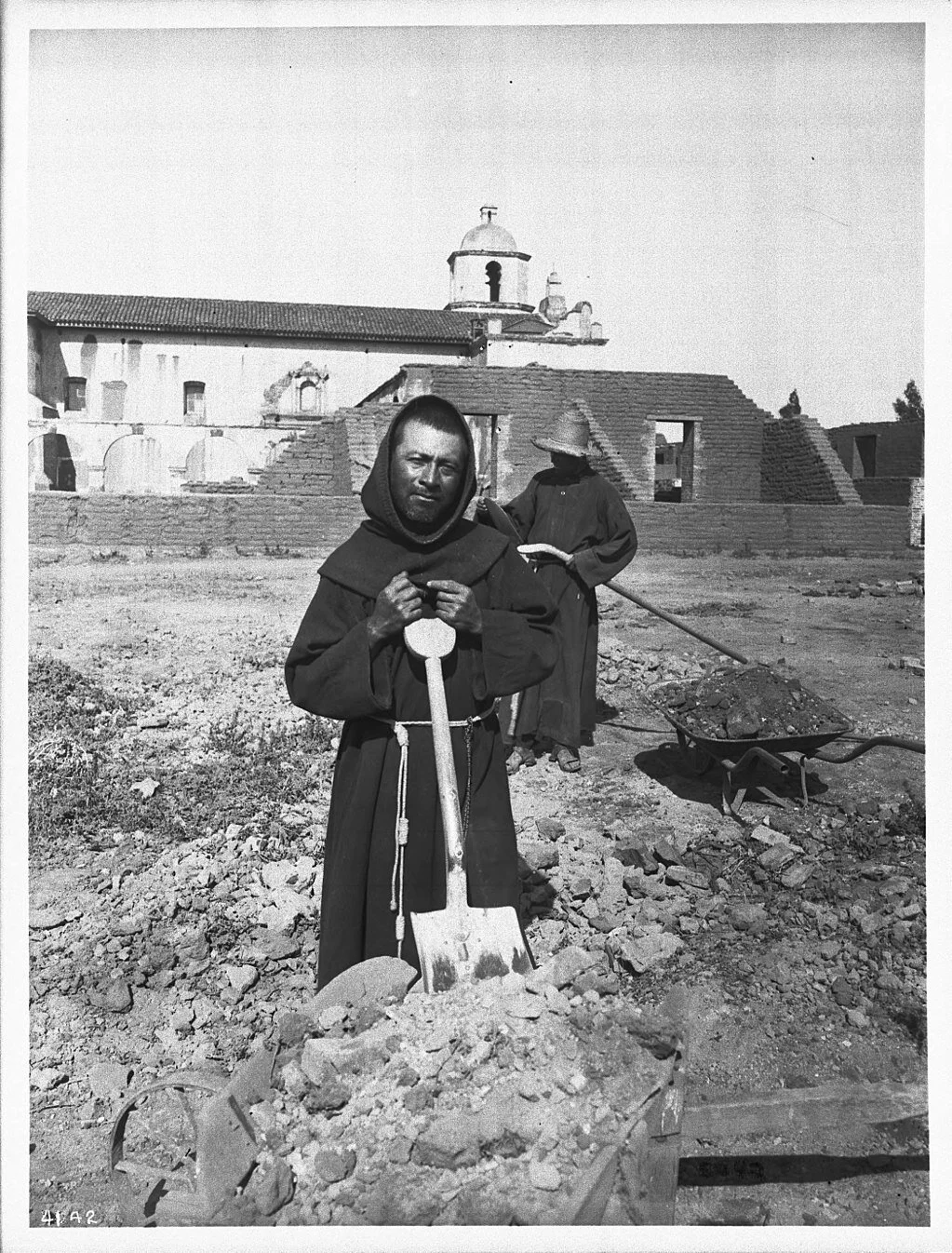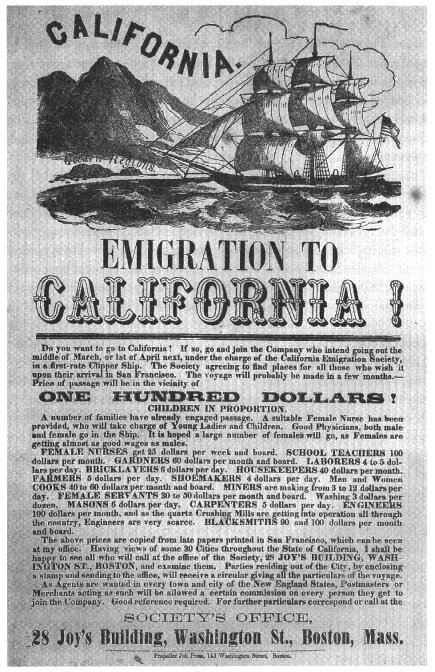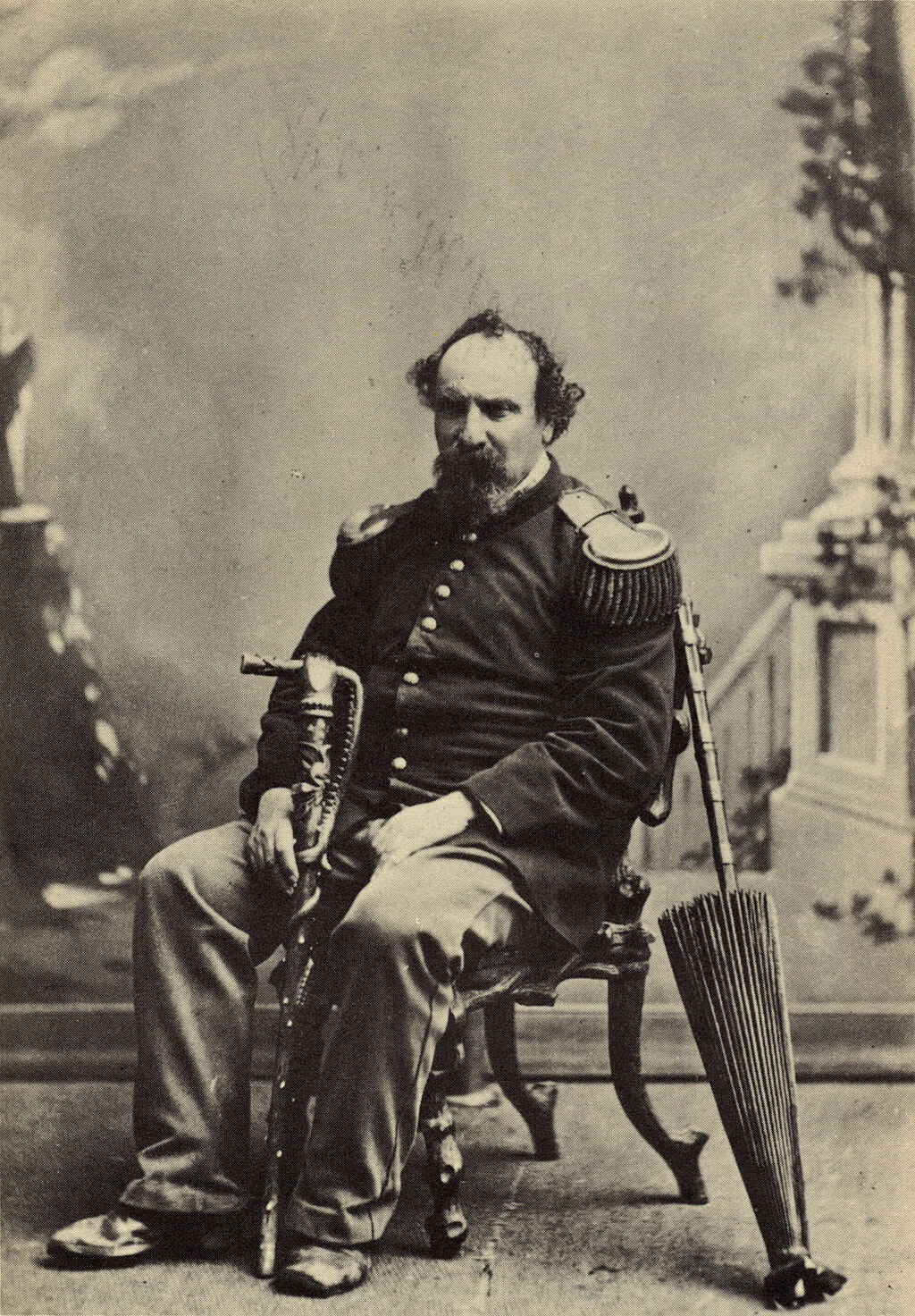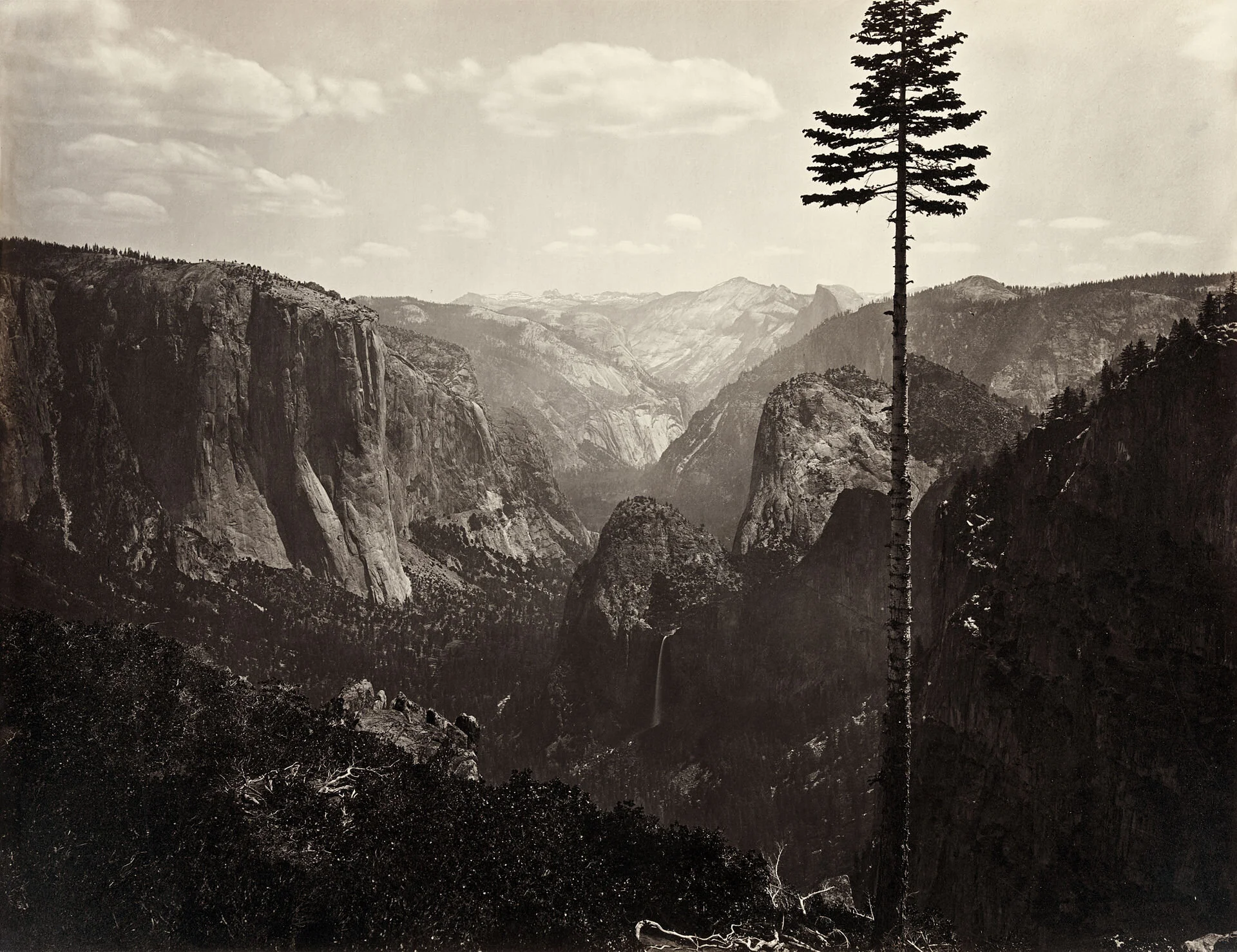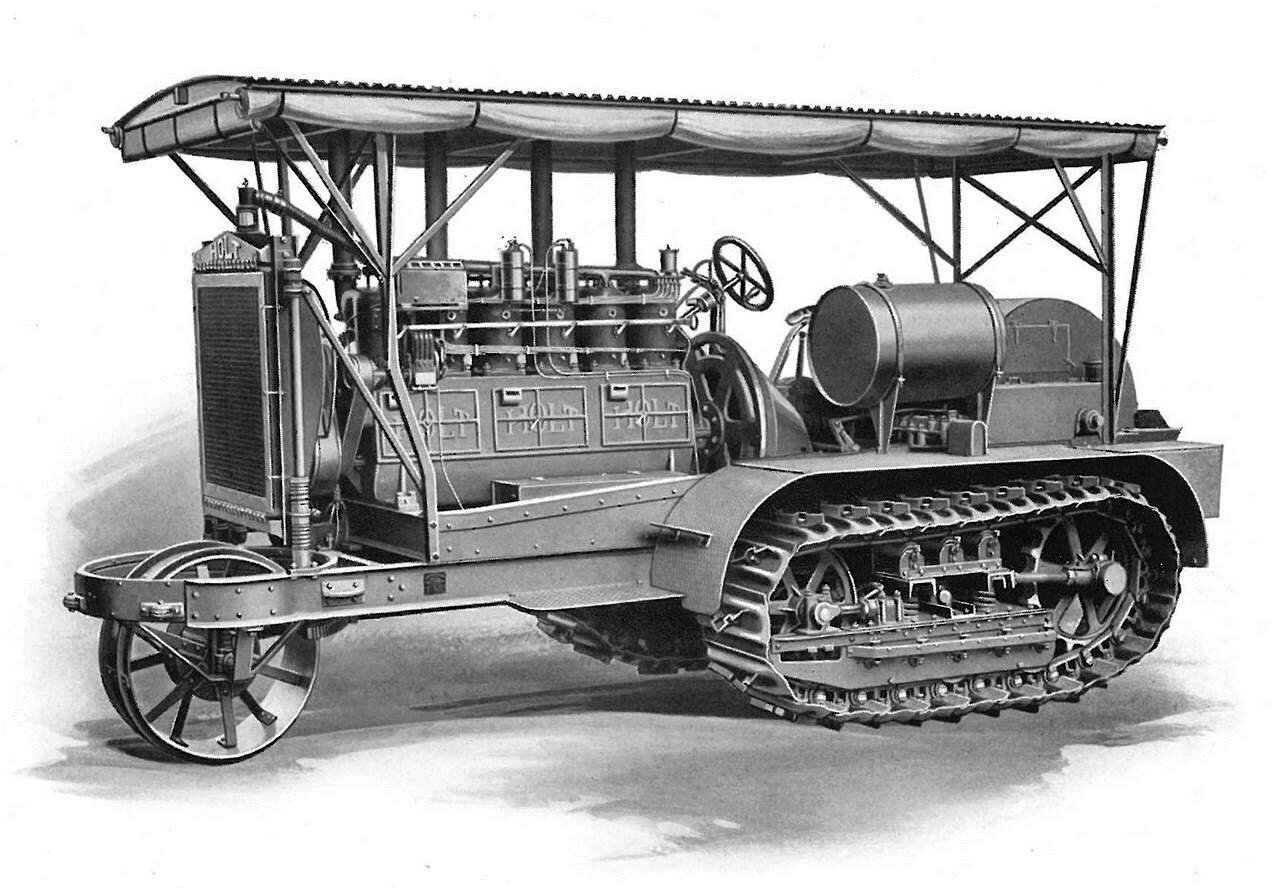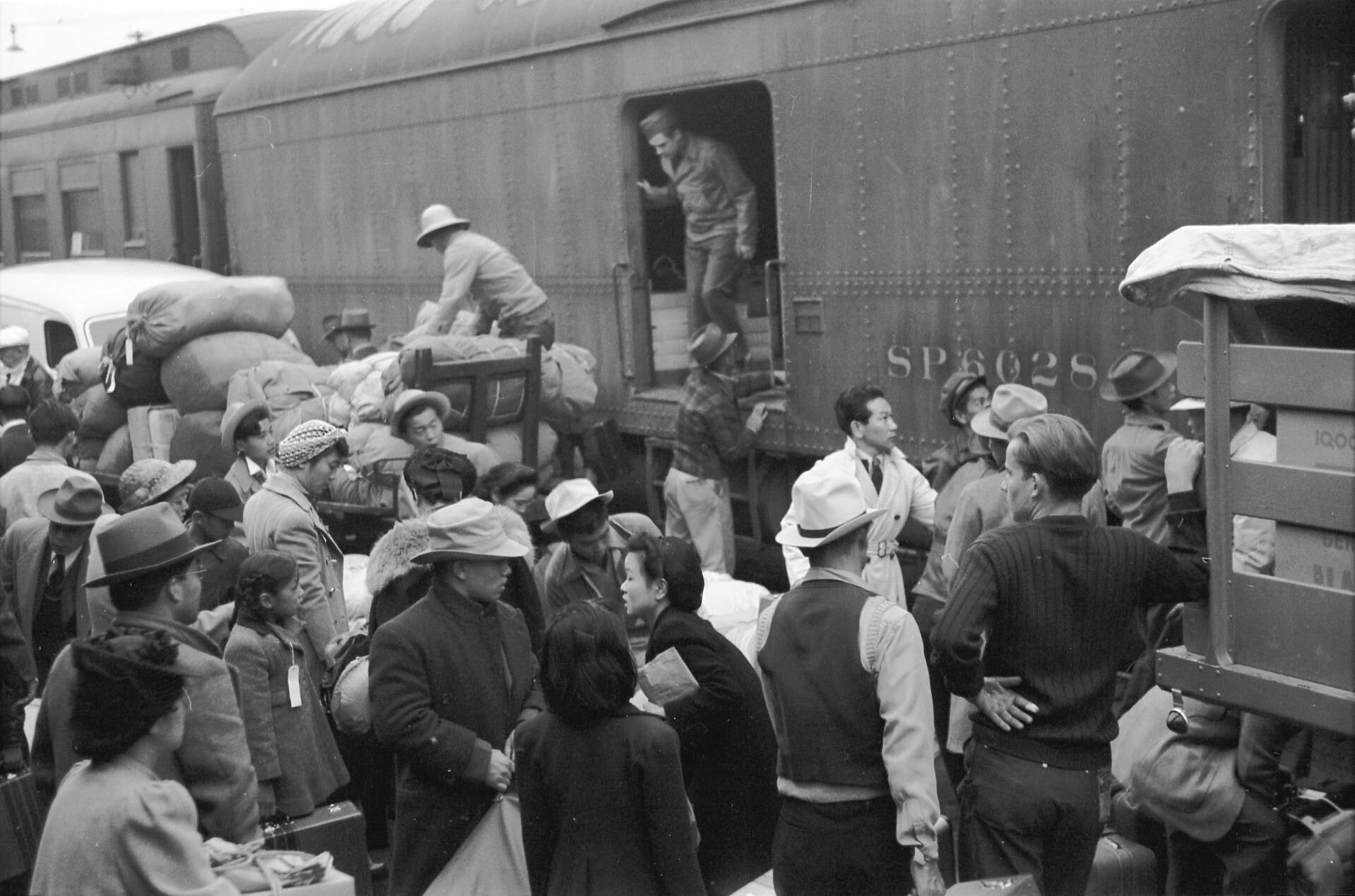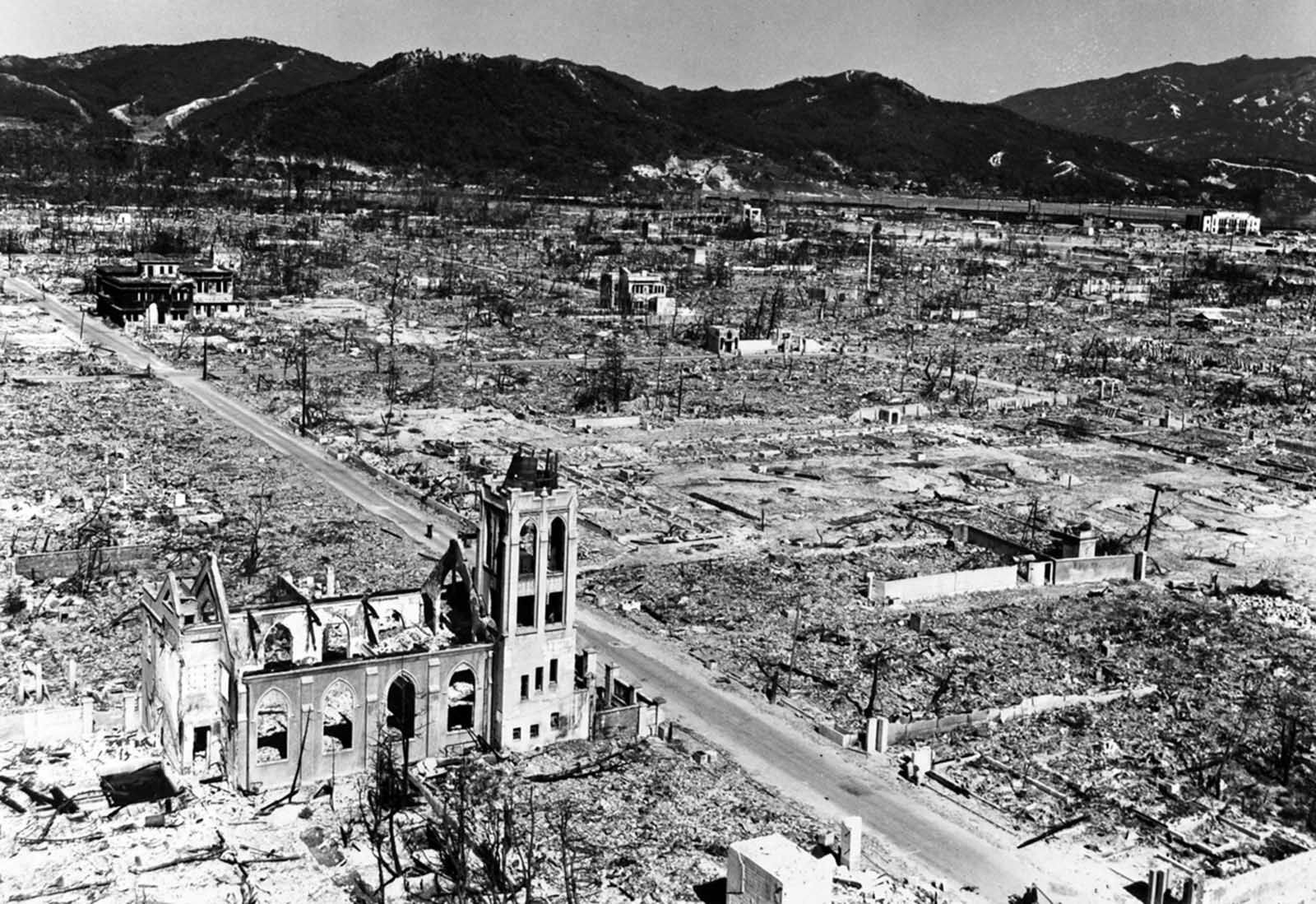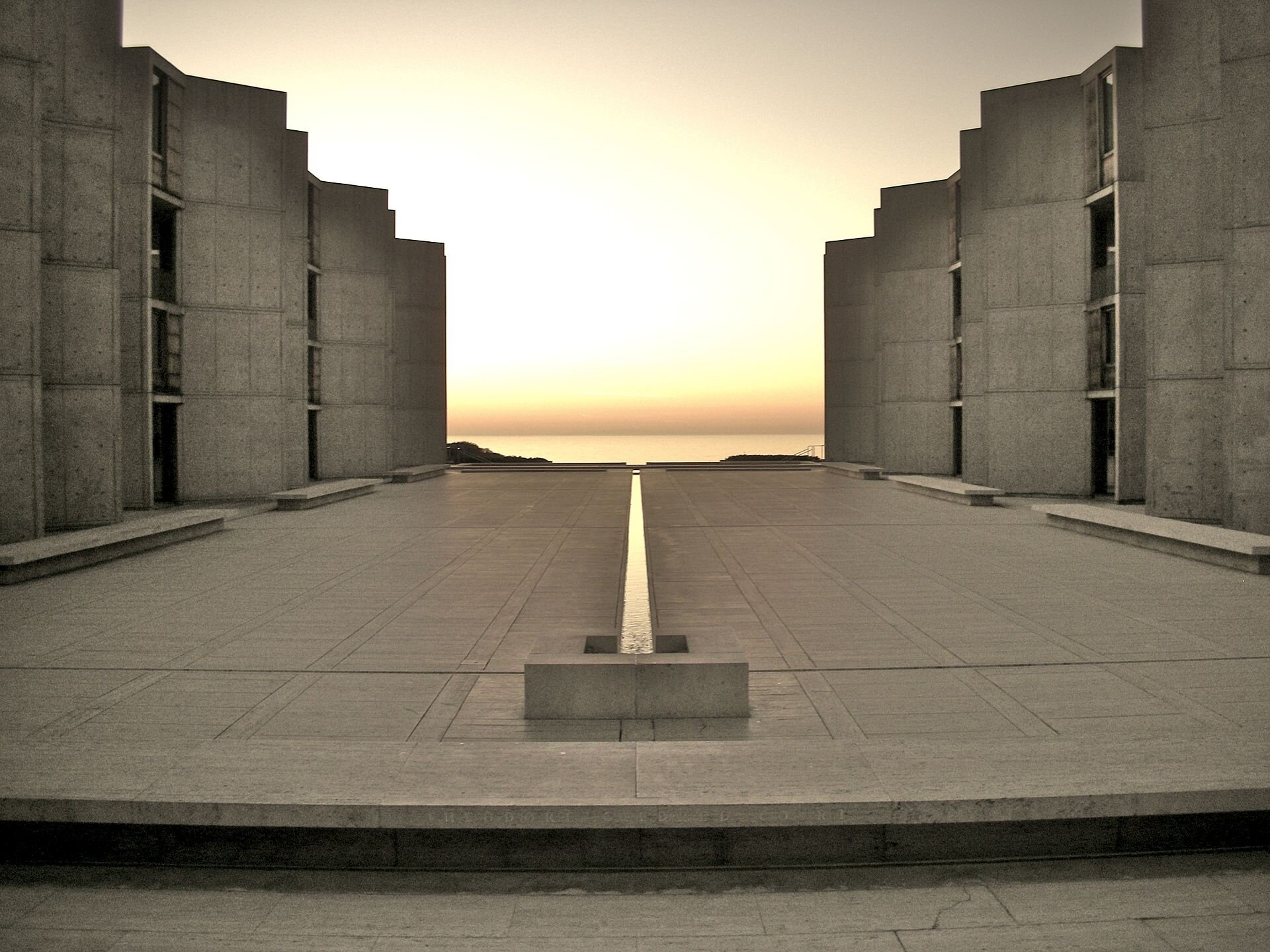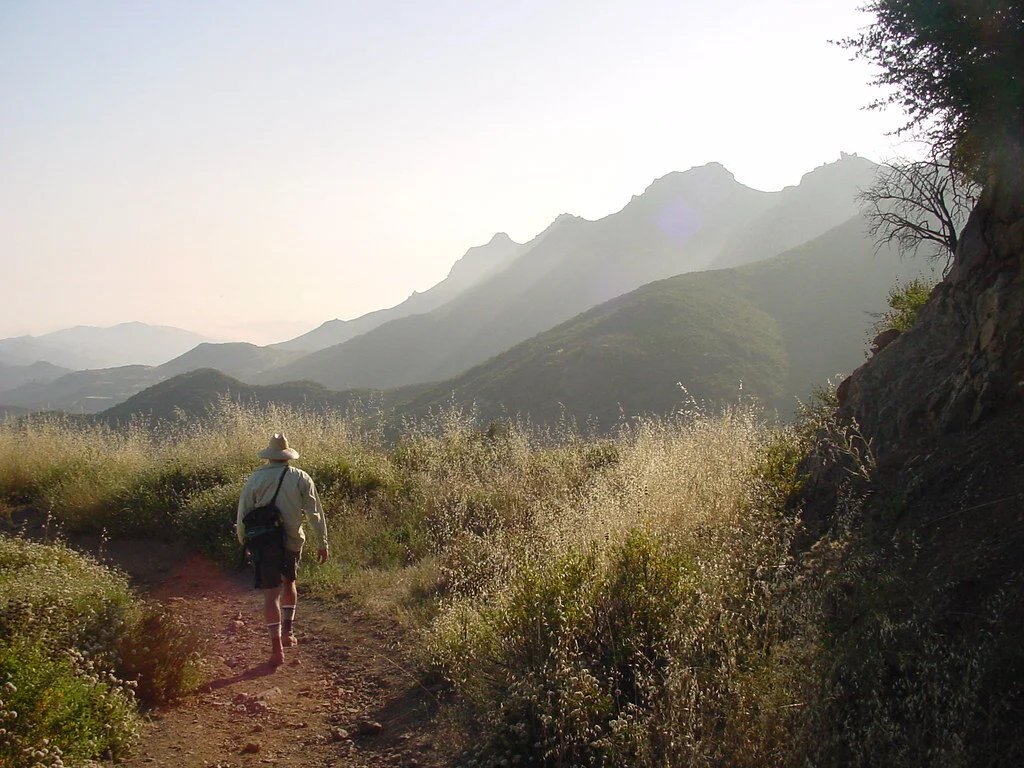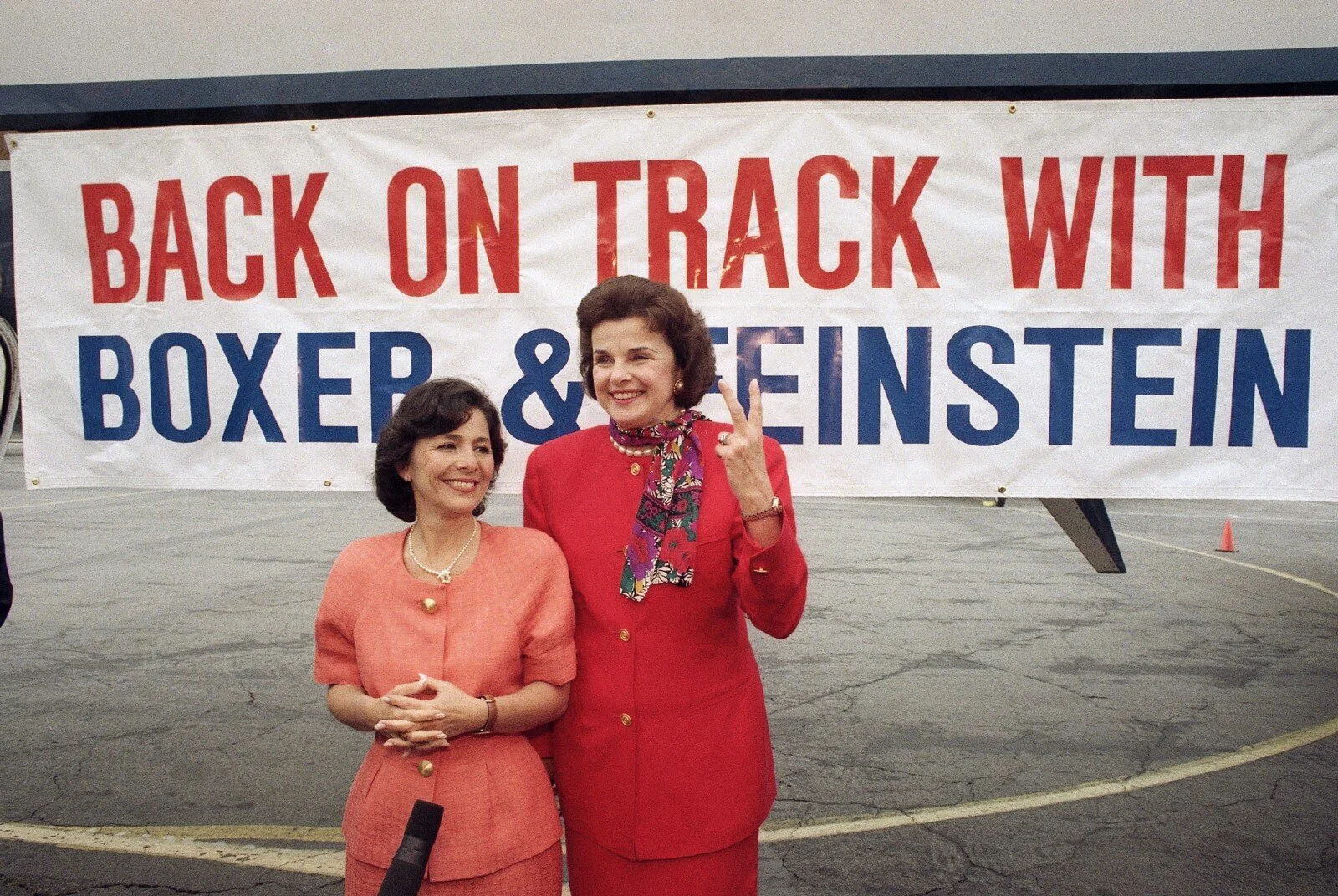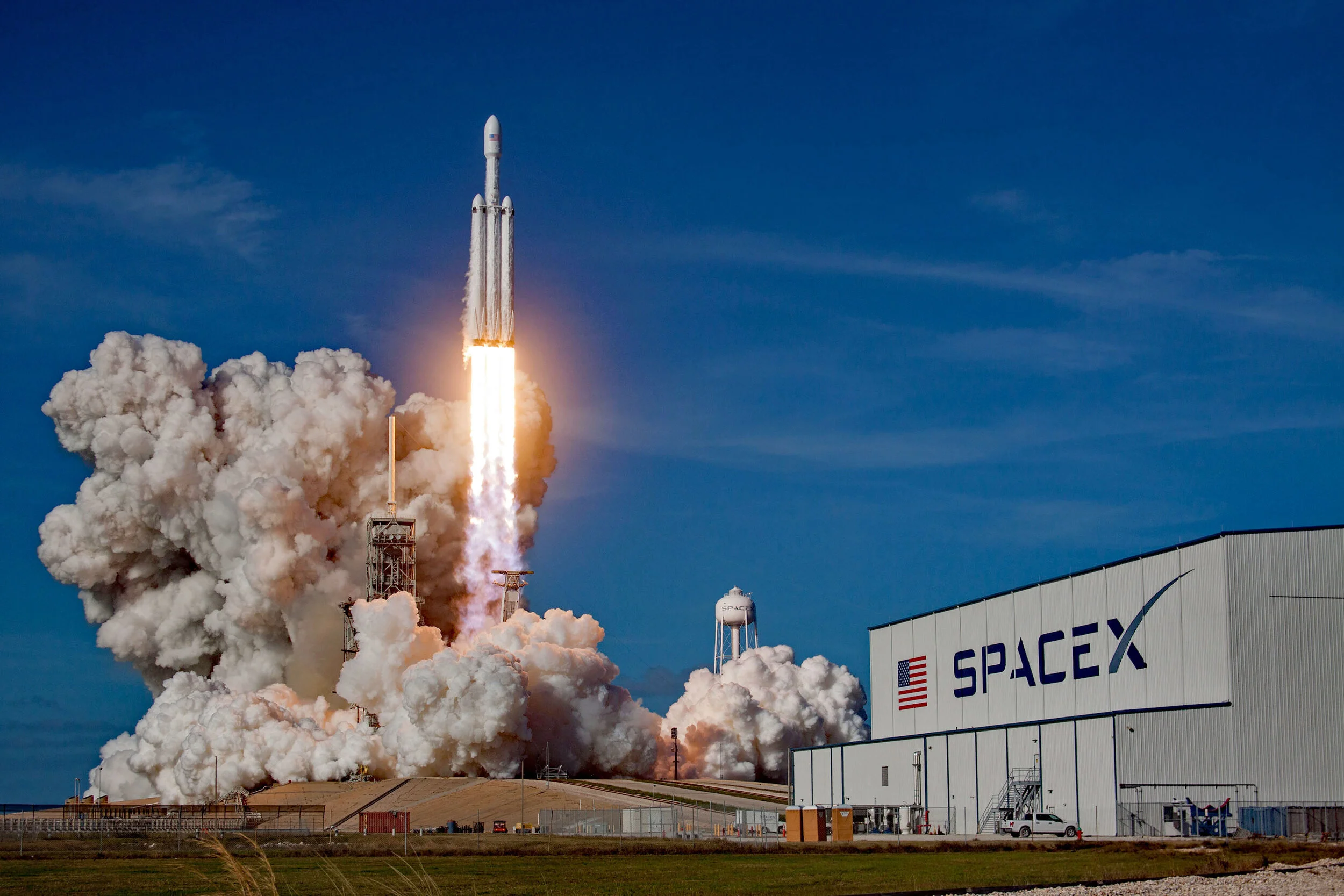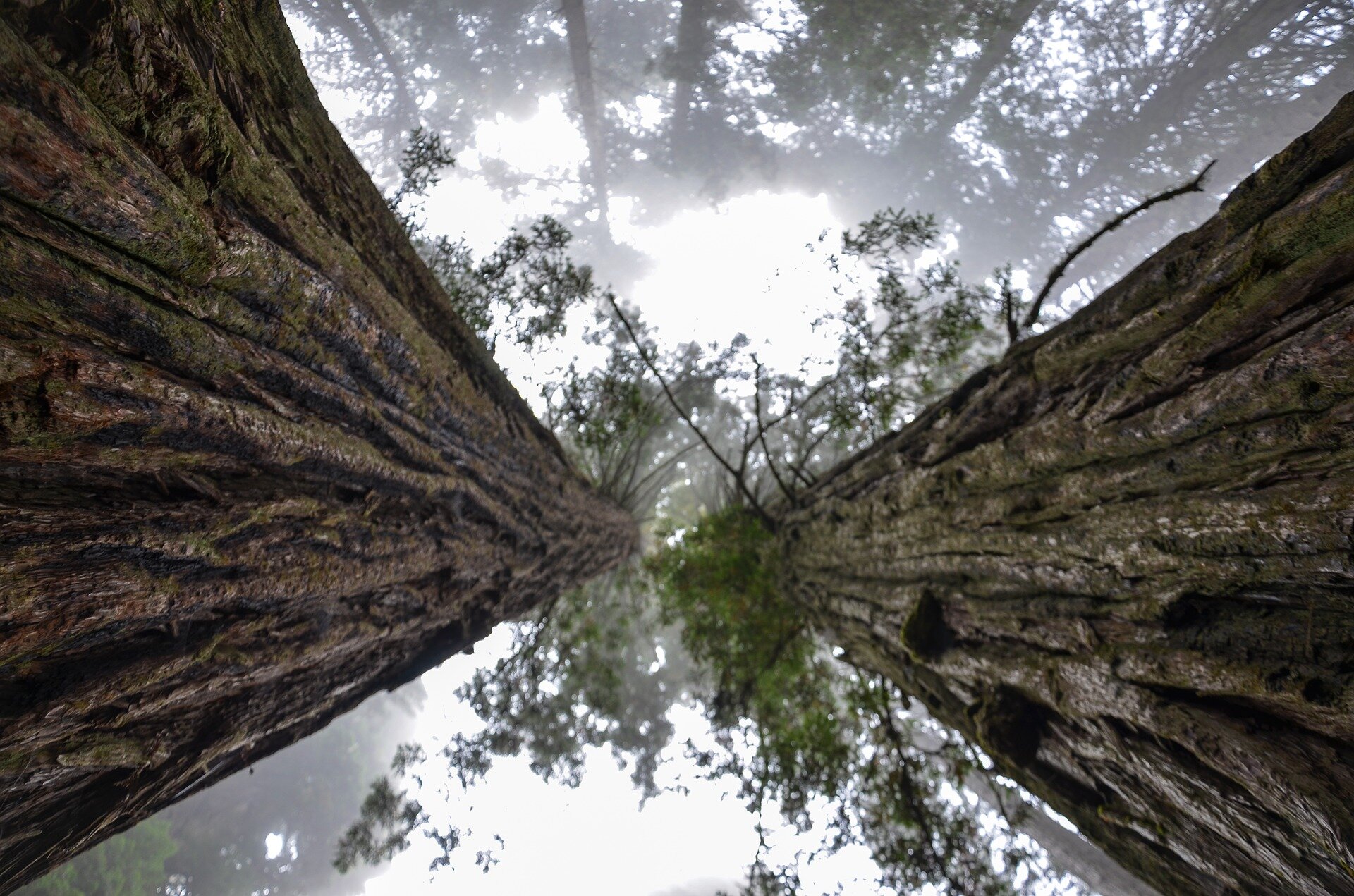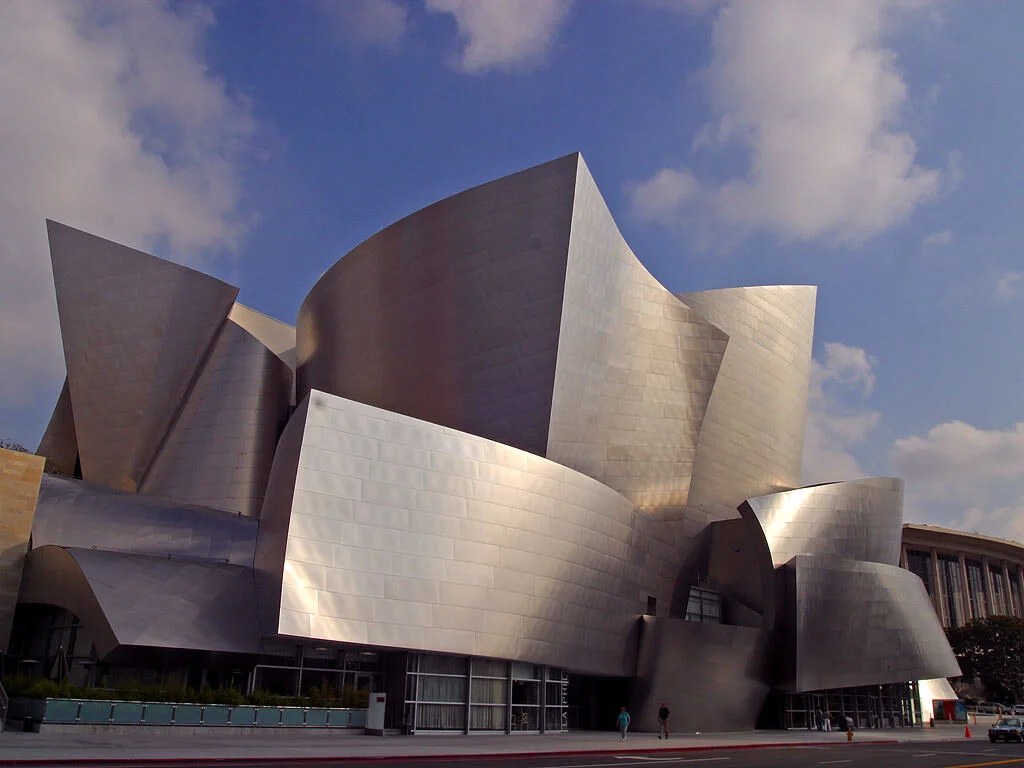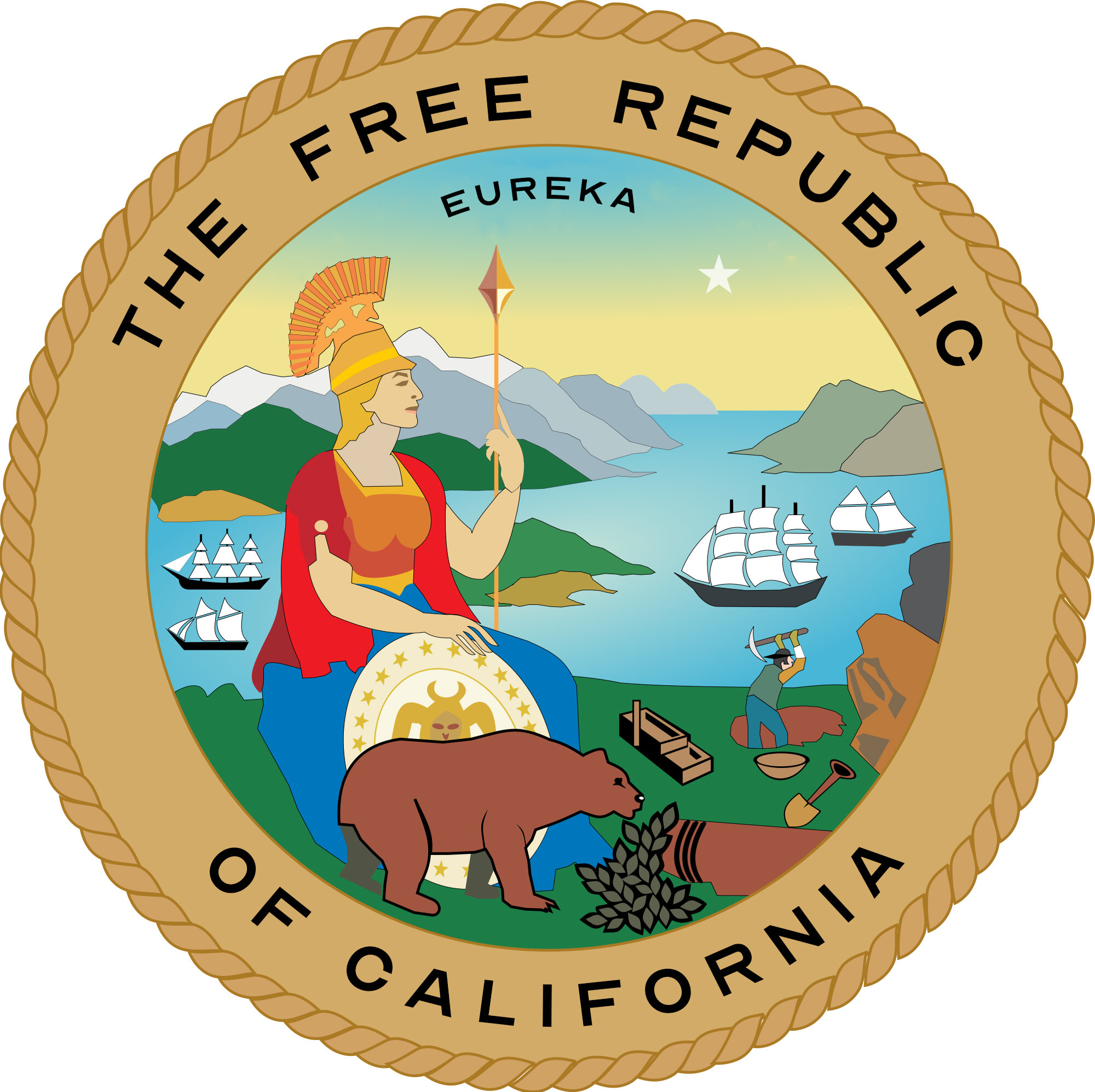A Brief History of California.
California as an island, 1650.
Circa 9000 B.C. – 1400 A.D. – The land is inhabited by hundreds of Indigenous tribes who engage in widespread seed collection. They develop forest gardening to provide for sustainable food and medicine growth and sophisticated fire ecology techniques to prevent sizable wildfires.
1510 – ‘California’ becomes a word and a dream. In the Adventures of Esplandian, Spanish writer Garci Ordóñez de Montalvo writes of an ‘an island near the Terrestrial Paradise…California.’
A Spanish galleon speeding off to that ‘island’ of California.
1540 – Hernando de Alarcón’s expedition sails through the Gulf of California to the mouth of the Colorado, becoming the first Europeans to set foot in California.
1542 – Juan Rodríguez Cabrillo, a Portuguese explorer, becomes the first European to explore California, landing at San Diego and continuing to the Catalina Islands, the future sites of San Pedro and Santa Monica and the Santa Barbara Channel Islands. He considers this the discovery of California and claims the coast for the King of Spain.
1545 – The first European-borne disease spreads across Cuba and New Spain, killing millions of Indigenous people. This is the beginning of a horrific series of colonial epidemics. A Franciscan friar who witnessed the tragedy wrote: “From morning to sunset, the priests did nothing else but carry the dead bodies and throw them into the ditches.”
1579 – “The Golden Hind” is damaged from its pillaging of the Mexican coast. Pulling into San Francisco Bay to repair it, Sir Francis Drake sees the stunning land and claims it for Queen Elizabeth I, calling it Nova Albion. Spain would disagree.
Monterey Bay, always delicious.
1602 – Sebastián Vizcaíno finds Monterey Bay, calling it ‘the land of milk and honey’ and claiming it for Spain.
1697 – The Catholic colonization begins in Baja California by the Jesuits at Loreto.
1705 – Eusebio Kino produces a map establishing that California is not an island (although many maps keep insisting it is for another hundred years).
1750 – While Spain and England continue their colonial plotting, approximately 300,000 Indigenous peoples live in California, organized into about 80 autonomous groups, sustaining themselves through hunting, gathering and fishing.
1767– Spain’s New Spain (i.e. Future Mexico) Visitador, José de Gálvez y Gallardo, expels the Jesuits giving control to another Catholic order, the Franciscans, tasking Miguel Joseph ‘Junipero’ Serra with the spiritual affairs of the missions.
1769 – A 55-year-old Father Junípero Serra, accompanied by the Spanish military led by the Spanish appointed ‘Governor of the Californias,’ Gaspar de Portolà i Rovira, founds San Diego de Acalala, the first mission in present day California. The King of Spain promotes accelerated colonization, anxious to protect the region from the Russian fur-traders heading south from Alaska. Indigenous peoples are pushed to be baptized by the militarized Franciscans and then, as ‘neophytes,’ forced to remain in servitude for farming, weaving, carpentry and leather-working.
Father Serra Celebrates Mass at Monterey by Léon Trousset.
1770 – Serra and Portolà travel by sea from San Diego to Monterey to meet their concurrent land expedition. After a joyous celebration, they raise the Spanish flag again claiming the land for Spain.
1775 – Benjamin Franklin becomes the first U.S. Postmaster General.
1775 – European diseases spread through the Indigenous population of California.
1775 – Indigenous peoples rebel against the forced labor of the Spanish in San Diego, burning buildings and killing many of the occupiers, including the mission’s head priest, Father Luís Jayme. Spanish advanced weaponry eventually turns the tide and they retain the outpost.
1776 – The U.S. Declaration of Independence is signed. Spanish settlers begin to permanently colonize San Francisco.
1784 – Serra dies at age 70 in Carmel, having established nine missions. Friars and soldiers continue to expand the church’s reach across California via a network of farms and ranches, benefiting from their serial exploitation of Indigenous ‘neophytes’ as captive laborers.
1795 – The Treaty of San Lorenzo establishes the border between U.S. and Spanish territories along the Mississippi.
1804 – The Spanish officially split Las Californias into Alta California (i.e. the future Free Republic of California) and Baja California. Monterey becomes the capital of Alta California.
1812 – North of San Francisco, Russian fur traders and settlers found Fort Ross at Bodega Bay.
1820 – Americans start trickling out west. They are trappers and hunters in search of the next kill.
'Neophyte' worker at Mission San Luis Rey de Francia.
1820 – Indentured servitude of Indigenous peoples peaks with mission records noting a statewide ‘neophyte’ population of 21,061.
1821 – New Spain gains independence from Spain, including control of Alta and Baja California.
1822 – As Mexican rule begins, American travelers start to explore and develop settlements in California.
1823 – Mission San Francisco Solano in Sonoma is founded, it is the final and northmost of the twenty-one missions in Alta California.
1824 – Chumash ‘neophytes’ revolt from within the missions Santa Inés, La Purisima and Santa Barbara. They capture and hold La Purisima for four weeks. Approximately twenty Chumash, four travelers and one Spanish soldier die in the fight. The Spanish execute seven Chumash as punishment.
1824 – The Bureau of Indian Affairs is established within the U.S. War Department, primarily to regulate and settle disputes arising from trade with Indigenous tribes.
1826 – Father José Altimira, a violent torturer and imprisoner of the ‘neophytes’ is driven from the mission he founded (Mission San Francisco Solano) in shame by a revolt of local Indigenous peoples.
1826 – 1834 – The Mexican government issues decrees leading to the secularization of all twenty-one Alta California missions. The neophytes are freed with the missions’ property designated to be split between the neophytes and the priests. Instead, a small influential group of ranchers with Spanish bloodlines take some ten million acres as their own private property.
1836 – The last mission is secularized. Since 1769, statewide mission records show 87,787 baptisms, 24,529 marriages and 63,789 burials.
Thomas ‘my bad’ ap Catesby Jones, circa 1842.
October 19-20, 1842 – Thinking the U.S. is at war with Mexico, Navy Commodore Thomas ap Catesby Jones captures the capital Monterey and claims California for the U.S. A day later, he discovers this is a mistake, apologizes and sails away.
1845 – The U.S. annexes Texas and Mexico severs relations with the U.S.
May 1846 – U.S. declares war on Mexico.
June 1846 – With the tactical support of U.S. Army Lt. Col., John C. Frémont, American settlers in Sonoma and Sacramento revolt and proclaim California independent in the Bear Flag Revolt.
1846 – Over the following months, American troops under Commodore Robert F. Stockton, aided by Frémont’s California Battalion, capture San Francisco, San Diego and Los Angeles. General Stephen W. Kearny names Stockton as the first American Governor of California.
September 1846 –Californios stage the Seize of Los Angeles fighting to take Pueblo de Los Angeles back. After four months, of intermittent fighting, an informal peace agreement, the Treaty of Cahuenga, is brokered. The treaty was drafted in English and Spanish by José Antonio Carrillo, approved by American Lieutenant-Colonel Frémont and Mexican Governor Andrés Pico on January 13, 1847 at Campo de Cahuenga in what is now Universal City.
January 1848 – Gold is discovered at Sutter’s Mill in Coloma.
February 1848 – The Treaty of Guadalupe Hidalgo is signed, ending the Mexican-American War and Alta California is officially ceded to the U.S.
Gold Rush Flyer, July 10, 1849.
1849 – The Gold Rush floods California with Americans in search of their fortunes. As billions of dollars in sparkly metal is shaken free, the land and its people are strained. Indigenous peoples are left out of mining jobs and denied suffrage. Thousands die from smallpox and scarlet fever.
1849 – California’s first public library is established in Monterey.
September 1849 – The California State Constitutional Convention is held in Monterey. Over six weeks, delegates from ten districts create California’s first Constitution. San Jose becomes the new capital.
1850 – In its first session, the California legislature passes the ‘Act for the Government and Protection of Indians’ California’s brief enshrinement of a degree of slavery into law. It allowed for the indenture of Indigenous children with the permission of a parent or friend of the child. In application it resulted in the open buying and selling of Indigenous peoples throughout the 1850s.
May 15, 1850 – A U.S. Army Regiment massacres between 60 and 200 Pomo tribe members, including the elderly, women and children in retaliation for the rebellion and murder of two local settlers who themselves had been murdering, starving, enslaving, abusing and sexually assaulting the Pomo.
September 9, 1850 – California becomes the 31st State of the Union. The U.S. Constitution provides for this marriage, though strangely is silent regarding separation.
1851 – A catastrophic fire destroys nearly three-quarters of San Francisco.
The Life and Adventures of Joaquín Murieta Advertisement, 1859.
1852 – San Quentin Prison breaks ground.
1853 – The California Academy of Sciences is founded.
1854 – The Life and Adventures of Joaquín Murieta by Yellow Bird (aka John Rollin Ridge) is published. It has the distinction of being the first novel published in California, the first novel published by an Indigenous American, and the first American novel to feature a Mexican protagonist.
February 11, 1858 – The California Supreme Court rules that California prohibited slave ownership for State residents, but that Charles Stovall's inexperience in the State (coming from Mississippi) and illness justified an exception and that he be allowed to leave the state with Archy Lee as his property.
Californians are outraged by the California Supreme Court decision. On March 5, Stovall, tries to sneak Lee out of the State by boat. Abolitionists and San Francisco police discover the plan and climb aboard the Orizaba to rescue Lee. Stovall is arrested for kidnapping, a charge which functionally contested the California Supreme Court's decision. Weeks later, the U.S. District in San Francisco, overturns the California Supreme Court decision, holding that Lee was a free man.
Emperor Norton.
September 17, 1859 – Joshua A. Norton declares “At the pre-emptory request of a large majority of the citizens of these United States, I Joshua Norton, formerly of Algoa Bay, Cape of Good Hope, and now for the last nine years and ten months past of San Francisco, California, declare and proclaim myself the Emperor of These United States.” A beloved character, he is many times homeless and many times in the company of Congressmen. Upon his passing, thousands attend his funeral.
1860 – The Pony Express starts mail courier service from Missouri to California, the first connected system of communications crossing the country. The fastest delivery trip was six days, it sent the news of Lincoln’s assassination.
1861 – The American Civil War begins as confederate forces fire on Fort Sumter in Charleston, South Carolina. When news of the Civil War reaches the West, California immediately declares for the Union.
1861 – Fort Point is completed. It was built to protect San Francisco from attack, however it is unneeded, seeing as it has never been fired upon and the City has never been at risk of occupation again.
Agoston Haraszthy’s bottling posse at his vineyard, Buena Vista in Sonoma.
1861 – Winemaker Agoston Haraszthy, often called ‘The Father of California Wine,’ acquires 200,000 grapevine cuttings in Europe for shipment to California.
1864 – President Lincoln signs The ‘Yosemite Valley Grant Act’ gifting Yosemite and the nearby Mariposa Big Trees to California on the condition that: “the premises shall be held for public use, resort and recreation.” It is the first park preservation project of the U.S. government.
1865 – The Thirteenth Amendment abolishes outright slavery. Lincoln is assassinated. The Confederacy surrenders ending the U.S. Civil War. It was a year of high highs and low lows.
Workers lay track for the Union Pacific Railroad in 1868.
1865 – The Union Pacific Railroad begins laying track at an average rate of one mile per day. In California, Chinese laborers join the Central Pacific work gangs, providing the strength and commitment needed to break through the mountains.
1867 – The United States purchases Alaska from Russia.
1868 – James Sloan Hutchinson witnesses a squealing boar violently dragged off to market over San Francisco’s rough cobblestones. The disturbing incident moves Hutchinson to call together a group of fellow humanitarians to found The San Francisco SPCA, the oldest animal welfare organization in the West.
1868 – "We propose to publish a bold, bright, fearless and truly independent newspaper, independent in all things, neutral in nothing." With this exuberant declaration, Charles and M.H. de Young, two brothers barely in their twenties, launch The Daily Morning Chronicle, precursor to the San Francisco Chronicle.
1868 – John Muir arrives in San Francisco and immediately departs for Yosemite where he will write My First Summer in the Sierra.
September 6, 1869 – The first westbound train arrives in San Francisco.
1870 – San Francisco is booming, becoming the tenth largest city in the United States.
Yosemite Valley by Carleton Watkins.
1870s – Artists Edward Vischer, Henry Chapman Ford, Jules Tavernier and Edwin Deakin draw and paint. Carleton Watkins photographs.
1873 - The seedless navel orange is introduced to California from Brazil.
March 10, 1876 – “Mr. Waston, come here. I want to see you.” And click, the first phone call ends. Alexander Graham Bell awaits Watson’s arrival from the other room.
1880 – George Hearst accepts a small daily newspaper, the San Francisco Examiner, as payment for a gambling debt.
1881 - The Los Angeles Times debuts as the Los Angeles Daily Times. The Times goes on to win forty-seven Pulitzer Prizes between 1942 and 2020.
Black Bart Wanted Poster.
1883 – ‘Black Bart’, the gentleman bandit famous for his polite robberies of Wells Fargo stagecoaches is revealed to be bank clerk and former Union soldier Charles Bolton.
1885 – Leland Stanford Junior University is founded in Palo Alto.
1891 – Amos Throop founds what is now the California Institute of Technology. It is his eponymous school until twenty-six years after his death when the school’s administrators get sick of hearing ‘Throop’ and change it to CIT. Einstein teaches there for three semesters in the 1930s.
Theodore Roosevelt and John Muir on Glacier Point, Yosemite Valley in 1906.
1892 – Sierra Club is founded with John Muir elected its first president. In its first conservation effort, the Sierra Club leads a campaign that defeats a proposed reduction to the boundaries of Yosemite National Park. The Sierra Club is now the most enduring and influential grassroots environmental organization in the United States with over 3.8 million members.
Late 1800s – The Transcontinental Railroad, funded by Californian industrialists, Charles Crocker, Mark Hopkins, Collis Huntington and Leland Stanford, opens California up for commodities transport and upon the invention of the refrigerated railcar, shapes California into the nation’s leading agricultural producer.
The Benjamin Holt tractor.
1901 – William McKinley is assassinated, Teddy Roosevelt assumes office.
February 20, 1902 – Ansel Adams is born in San Francisco.
1905 – Fresno waggoneer Benjamin Holt invents the first practical crawler tread tractor.
1905 – The San Francisco Chronicle publishes a flurry of accusations of Japanese immigrants debauching white women, deliberately undermining the school system, and causing crime and poverty. The series inspires the founding of the Japanese and Korean Exclusion League and the 1906 San Francisco Board of Education attempt to segregate those of Japanese descent in public schools.
April 18, 1906 – The earth rumbles, destroying San Francisco, setting off fires that burn eight square miles and leave of 250,000 homeless. The original ‘Bear Flag Revolt’ flag turns to ash.
Vintage Surfing Image, U.S. Archives.
1907 – George Freeth introduces surfing to Southern California as ‘the man who walked on water’ in Redondo Beach.
Hetch Hetchy Valley before and after.
1909-1923 – Debate ensues over possibly flooding and damning Yosemite’s Hetch Hetchy Valley. To which John Muir (in the course of his campaign to save the Valley) impassions: "Dam Hetch Hetchy! As well dam for water-tanks the people's cathedrals and churches, for no holier temple has ever been consecrated by the heart of man." The U.S. Congress doesn’t care, passing the Raker Act in 1913 to allow for the damn. In 1923, construction is completed and the valley drowns.
1910 – Angel Island opens and for 30 years serves as a point of entry to the United States for immigrants from around the world; the Ellis Island of the West. It also maintains a prison for hundreds of Chinese immigrants to enforce the U.S. Chinese Exclusion Act.
1911 – California grants women’s suffrage. Seven years later, the U.S. passes the 19th Amendment.
1911 - The first Hollywood production company, Nestor Film Company opens in an abandoned tavern…and the rest is history, as is this.
1913 – California passes the Alien Land Law prohibiting "aliens ineligible to citizenship" from owning land or property. The law primarily affects the Asian-Californian communities in an attempt to harass them into leaving and harass others from coming.
1913 - The Natural History Museum of Los Angeles County opens. It remains the largest museum of its kind in the U.S..
1915 – The Palace of Fine Arts in San Francisco is built for the 1915 Panama-Pacific International Exposition.
Ishi in 1914.
March 25, 1916 – Ishi, the last surviving member of the Yaha tribe passes away of tuberculosis.
1917 – Frank Lloyd Wright designs the Hollyhock House for heiress Aline Barnsdall. The home, now public within Barnsdall Art Park, is named a UNESCO World Heritage site in 2019, becoming the first place in Los Angeles to earn such a designation.
1917-18 – The U.S. intervenes in World War I, but declines membership in the League of Nations in its aftermath.
1918 – Brothers Sam, Jack, Harry and Albert Warner, immigrants from Poland via Pennsylvania, open Warner Bros. Studios on Sunset Boulevard.
1920 – The American Civil Liberties Union is founded "to defend and preserve the individual rights and liberties guaranteed to every person in this country by the Constitution and laws of the United States." It’s been an uphill battle ever since.
1921 – Welder Simon Rodia begins work on what will become the Watts Towers.
1921 – The Black Wall Street Massacre occurs in Tulsa, Oklahoma. White mobs murder hundreds and destroy thirty-five blocks of the Greenwood District in what’s been called ‘the single worst incident of racial violence in U.S. history.’
1922 – In Ozawa v. US, the Supreme Court affirms that Asian immigrants are not eligible for naturalization.
1923 – Roy and Walt Disney found Disney Brothers Cartoon Studio in Los Angeles, the precursor to The Walt Disney Company, one of the biggest and most valuable brands in the world. It is still headquartered in Southern California.
1924 – U.S. Congress grants Indigenous people the right to U.S. citizenship. Super generous of them.
La Opinion front page, September 16, 1926.
1926 – The Spanish-language newspaper La Opinion is founded in Los Angeles. Today, it is the largest circulation Spanish-language newspaper in the United States.
1927 – The Academy of Motion Picture Arts & Sciences is established in Los Angeles, two years later they start handing out Oscars.
1933-1939 – Franklin Delano Roosevelt implements the programming known collectively as the New Deal. It restructures the U.S. system to protect against another Great Depression and provide for its citizenry. Many of its programs are still in effect, such as the Social Security Act (later amended to also include Medicare and Medicaid), the Securities and Exchange Commission (SEC), the Federal Housing Administration (FHA) and the Federal Deposit Insurance Corporation (FDIC).
At the time those deemed supportive of New Deal programming were called ‘liberals’ and those opposed ‘conservatives.’ The distaste for social support of their communities and fellow Americans remains a signature component of self-appointed ‘conservatives’ in America.
The interior of the San Francisco War Memorial Memorial, Opera House, home of the San Francisco Opera, the San Francisco Ballet and in the same complex, the first location of SFMOMA.
1933 – The San Francisco Ballet (then the San Francisco Opera Ballet) is founded. It is the home to the oldest professional ballet company in North America.
1933 – Alcatraz becomes a U.S. federal prison.
1935 – The San Francisco Museum of Modern Art (SFMOMA) opens on the fourth floor of the War Memorial Veterans Building.
May 27, 1937 – First proposed by Emperor Norton in 1869, the Golden Gate opens to pedestrian traffic. It wasn’t supposed to stay orange, but the orange was cool, so they kept it.
1937 – Aldous Huxley moves to California. Years later, at his hearing for citizenship, Huxley refuses to swear to bear arms for the U.S. based on religious beliefs (the only rationale allowed under the law). The judge adjourns and Huxley withdraws his application.
The birthplace of Silicon Valley.
1939 – From a garage in Palo Alto, David Packard and Bill Hewlett flip a coin to decide whose name comes first in their new company.
1940 – The Arroyo Seco Parkway opens between Downtown Los Angeles and Pasadena, becoming America’s first freeway.
1940 – Richard and Maurice McDonald open the first McDonald’s in San Bernardino.
May 13, 1941 – Richie Valens is born in Pacoima.
December 7, 1941 – Pearl Harbor is bombed, the next day the U.S. enters World War II.
Japanese Americans going to Manzanar internment camp gather around a baggage car in Los Angeles in April 1942.
1942 – Over 110,000 Japanese Americans are taken from their homes and relocated to U.S. internment camps. The ACLU calls it "the worst single wholesale violation of civil rights of Americans citizens in our history."
1942 – A Japanese submarine shells an oil field near Goleta.
1943 – Jet Propulsion Laboratory is established in Pasadena.
1944 – Henry Miller moves to Big Sur.
1944 – Bing Crosby’s recording of “San Fernando Valley” reaches No. 1 on the charts.
Signing of the U.N. Charter in San Francisco, 1945.
June 1945 – The San Francisco Conference gathers the diplomatic world for the signing of the United Nations Charter to maintain peace and security worldwide. It is considered the most important conference of all time.
Hiroshima after the bomb.
August 6th & 9th, 1945 – The U.S. drops atomic bombs on Hiroshima and Nagasaki killing hundreds of thousand people, including the elderly, women and children and chemically destroying the local environment for decades. It remains the only time a country has used nuclear weapons in war.
Case Study House 22 - The Stahl House.
1945-1966 – The Case Study Houses Program commissions major architects including Richard Neutra, Charles and Ray Eames, Eero Saarinen, and A. Quincy Jones, to design and build inexpensive and efficient model homes. Of the twenty-five that were built, all but one are in California.
1946 – Incumbent California Governor Earl Warren wins both Democrat and Republican nominations for reelection. He then becomes Chief Justice of the Supreme Court, presiding over some of the most monumental cases in U.S. history, such as Brown v. Board of Education (1954), Reynolds v. Sims (1964), Miranda v. Arizona (1966) and Loving v. Virginia (1967), all of which push the U.S. towards a kinder, less racist existence.
Ronald.
1947 – Actor Ronald Reagan, while president of the Screen Actors’ Guild, operates as an FBI informant, notifying the government of those he thought suspicious of being communist sympathizers, sentencing his colleagues and Guild members to harassment and blacklisting.
1948 – Jack Kerouac coins the term ‘Beat Generation.’
1950 – The San Francisco 49ers debut in the NFL, winning only three games, setting low expectations before crushing the competition in the 1980s and 90s, becoming the greatest team in the history of the sport.
1950 – In Stoumen v. Reilly, the California Supreme Court rules that bars cannot be discriminated against because they choose to cater to gay or lesbian clientele. It was one of the earliest victories for gay rights in the U.S.
1952 – Bay Area Educational Television Association (later KQED) is founded, becoming only the sixth public broadcasting station in the U.S. at the time.
Scientology central.
1954 – L. Ron Hubbard founds Church of Scientology in Los Angeles. Lisa Remini and Tom Cruise join later.
July 17, 1955 – Disneyland opens in Anaheim.
1956 – Howl and Other Poems by Allen Ginsberg is published by Lawrence Ferlinghetti’s City Lights Books in San Francisco. Ferlinghetti is charged with obscenity for publishing it, to which, with the support of the ACLU, he is acquitted by the California State Superior Court.
1957 – Los Angeles based Wham-O creates the Hula Hoop. They sell over 100 million of the plastic rings in two years.
1958: Both the New York Giants and Brooklyn Dodgers move to California. New York, in anger, puts all of their money on the Yankees and pretends the Mets also moved West.
1959 – Los Angeles-based toy company Mattel debuts Barbie, going on to sell over a billion body-dysmorphic and predominately pale dolls.
Salk Institute for Biological Studies in La Jolla, designed by Louis Kahn.
1960 – Jonas Salk founds the Salk Institute for Biological Research in La Jolla.
1961 – The Los Angeles County Museum of Art (LACMA) is established. Four years later, it moves to its complex on Wilshire Boulevard, becoming the largest art museum built in the U.S. with the exception of the National Gallery of Art.
1961 – The Chouinard Art Institute and Los Angeles Conservatory of Music merge to form California Institute of the Arts, the first degree-granting school for both the visual and performing arts in the U.S.
1963 – Ken Kesey participates in CIA sponsored LSD trials while a student at Stanford University.
September 15, 1963 – The 16th Street Baptist Church in Birmingham, Alabama is bombed, killing four little girls.
November 22, 1963 – John F. Kennedy is assassinated in Dallas, TX.
1964 – The Whisky a Go Go opens on the Sunset Strip. It hosts legendary musical acts for decades, including The Byrds, The Doors, Jimi Hendrix, the Who, Talking Heads, Oasis, Nirvana and Soundgarden. In 2006, it is inducted into the Rock ‘N Roll Hall of Fame.
1965 – The Grateful Dead forms in Palo Alto.
Caesar Chavez at the Delano Grape Boycott. Associated Press.
1965-66 – Caésar Chávez supports the Delano grape workers strike, bringing the cause of farmworkers, their low wages and poor work environment to the national stage.
1966 – The Beach Boys release their No. 1 hit Good Vibrations, it is considered one of the most influential pop songs of all-time.
Huey Newton and Bobby Seale.
October 1966 – Huey Newton and Bobby Seale found the Black Panther Party for Self Defense in Oakland.
1966 – Ed Ruscha paints Standard Station.
1967 – The first ever NFL Super Bowl (then called the AFC-NFC World Championship) is played in Los Angeles Colosseum.
1967 – The Human Be-In in Golden Gate Park introduces the U.S. to hippie culture. The Monterey Pop Festival, months later, introduces the country to rock music.
1967 – California establishes the California Air Resources Board which immediately sets stringent emissions standards for the State. This precedes the U.S. National Emissions Act and still surpasses its emissions standard. Due to California’s economic strength, car companies are forced to follow the more stringent California guidelines in lieu of making different cars for different states.
April 4, 1968 – Martin Luther King, Jr. is assassinated in Memphis, Tennessee.
1969 – The Los Angeles LGBT Center is founded. Today, the Center provides services for more LGBT people than any other organization in the world.
July 20, 1969 – Neil Armstrong walks on the moon.
1969 – The Manson murders and Altamont scare the shit out of Southern Californians.
Alcatraz occupation by Indians of All Tribes.
1969-1971 – A Group of Indigenous students from a variety of tribes, names themselves ‘Indians of All Tribes’ and occupy the now vacant Alcatraz Island for twenty months, demanding it become a cultural and educational center.
1970 – West Hollywood hosts its first gay pride parade. The parade is now one of the largest the world, drawing more than 350,000 attendees annually.
Xerox Parc.
July 1, 1970 – Xerox Palo Alto Research Center (Parc) opens. They lead the revolution in home computing by inventing and incubating technology such as the laser printing, mouse and bitmap graphics.
1971 – The Eagles form in Los Angeles and soon become one of the most successful acts of all-time. For example, their 1976 album ‘Hotel California’ wins the Grammy for Record of the Year, goes platinum twenty-six times and sells over 32 million copies worldwide.
1973 - Tom Bradley becomes mayor of Los Angeles, the second African-American mayor of a major U.S. city. Well-loved, he serves as mayor for the next two decades.
April 1, 1976 – Steve Jobs, Steve Wozniak, and Ronald Wayne found Apple Computer Company.
1976 – Black Flag forms in Hermosa Beach.
May 24, 1976 – The Judgment of Paris rocks the world’s wine aficionados. In the blind test there are two categories, white and red. Californian wines win both. Frenchmen faint in agony. Take that Chateau Mouton-Rothschild.
Hiking the Santa Monica Mountains.
1978 – The Santa Monica Mountains Recreation Area is established. At over 153,000 acres, it is the world’s largest urban national park.
November 27, 1978 – San Francisco Mayor George Moscone and Supervisor Harvey Milk are assassinated.
1979 – The Museum of Contemporary Art (MOCA) opens in Los Angeles. It houses one of the most significant collections of contemporary art in North America.
1980 – Los Angeles surpasses Chicago as the second largest city in the U.S.
1984 – Los Angeles becomes the only U.S. city to host the Summer Olympic Games twice.
1986 – Proposition 63 passes declaring English the official language of California.
Solar panels being installed at the White House. No one realized they would be ripped down for evil reasons shortly thereafter.
1986 – Ronald Reagan takes the functioning solar panels installed by Jimmy Carter off of the White House. Concurrently, he guts research and development budgets for renewable energy and eliminates tax breaks for wind and solar technologies, preferring fossil fuel pollution and dependence on foreign suppliers.
1987 – The AIDS Memorial Quilt starts in San Francisco.
1989 – The 7.1 magnitude Loma Prieta Earthquake hits the Bay Area during Game Three of the ‘Battle of the Bay’ World Series between the Oakland A’s and San Francisco Giants. The nation sees it live before the camera feed is cut. Sixty-seven people parish, the majority due to the collapse of a double deck highway.
1992 – A majority white jury in the conservative enclave of Simi Valley acquits four Los Angeles police officers of assault and use of excessive force, despite seeing video of them violently beating Rodney King. The Los Angeles Uprising ensues.
1992 - The Japanese American National Museum opens in the Little Tokyo section of Downtown Los Angeles, it is is the largest museum in the United States dedicated to sharing the experience of Americans of Japanese ancestry.
California Senate Democrats Barbara Boxer and Dianne Feinstein in Los Angeles, June 3, 1992. Associated Press.
1992 – California became first state to elect two women to U.S. Senate - Barbara Boxer and Dianne Feinstein. Feinstein is currently still serving, she hates the idea of retirement.
Look out world, it’s California’s Golden Age of Hip Hop.
1992 – Dr. Dre releases his debut album, The Chronic.
1994 – California passes its controversial three strike law. Still on the books in the State until 2021, when the Free Republic of California’s Constitution invalidates it through mandatory sentencing tribunals.
1994 – Yahoo! is founded by Jerry Yang and David Filo while graduate students at Stanford University.
1995 – Pierre Omidyar founds eBay in San Jose.
1996 – Google begins as a research project of Sergey Brin and Larry Page while PhD students at Stanford University. It is now huge, you can google it.
1997 – Netflix is founded Scotts Valley by Reed Hastings and Marc Randolph. Blockbuster laughs.
1998 – California bans smoking in bars, restaurants and nightclubs, the first state to do so.
2000 – A section of East Hollywood is designated as America’s first and only ‘Thai Town.’
January 2001 – Wikipedia is founded in San Francisco by Jimmy Wales and Larry Sanger.
2001 – Terrorists attack in the U.S., killing 2,977 immediately and causing long term health consequences and death for many first responders. Al-Qaeda and its leader Osama Bin-Laden claim responsibility. U.S. President George Bush and Congress pass and sign a bill to allow for the President to ‘use force’ in foreign arenas, bypassing Congressional approval of military actions and establishing the Department of Homeland Security. Homeland Security is given wide-reaching powers, from violating privacy in lieu of Constitutional protections to, in recent years, separating newborns from their asylum seeking parents and imprisoning them for months.
We have lift off.
2002 – SpaceX is founded in El Segundo by Elon Musk. In 2020, it becomes the first private company to send astronauts to the International Space Station.
2003 – Tesla is founded in San Carlos by Elon Musk. By 2014, it becomes the biggest selling electric plug-in car manufacturer in the world. By 2020, it sells its millionth car.
Wait, what?
2003 – California gets the idea of recalling Gray Davis as Governor, resulting in a wacky election where 135 candidates qualify for the ballot and suddenly the Terminator is Governor.
2004 – Facebook forms as a social network for colleges in lieu of the ‘facebook,’ a catalogue traditionally printed by colleges with headshots of the incoming class of students. In future years, it sees unprecedented growth, culminating in complicity with dictators, hate groups and liars in their global campaigns to undermine democracy and promote (or even stream) genocide.
November 2004 – Three years prior, U.S. president George W. Bush blocks virtually all stem cell research for no rational reason. In response, California enacts Proposition 71 amending its State Constitution to make stem cell research a constitutional right and approving a three billion dollar fund for said research.
March 2006 – Twitter is founded in San Francisco.
March 27, 2006 – For the first time in over a century, wild California condors are seen nesting near Big Sur.
Sequoia sempervirens.
August 25, 2006 – Hyperion, a California Coastal Redwood is discovered in a remote area near Eureka. It is the largest known tree in the world, measuring over 380 feet high and is between 600 and 800 years old. Its exact location is kept secret to protect it from assholes.
2007 – California experiences severe wildfires burning over 1.5 million acres.
2008 – Barack Obama is elected the first African-American President of the U.S..
September 2008 – The Large Hadron Collider is completed, making it the highest energy particle collider and the largest machine in the world.
April 2010 – The largest oil spill in U.S. history occurs in the Gulf of Mexico. Years later, U.S. President Donald Trump endeavors to increase offshore drilling without any substantial change in safety technology.
2011 – Jerry Brown is back as Governor, nice!
2011- Uber launches in San Francisco. A year later, Lyft follows, also in San Francisco.
2011 – Impossible is founded in Redwood City, creating a vegan burger adopted by restaurants worldwide.
2013- Human cells are successfully cloned.
The Walt Disney Concert Hall, designed by Frank Gehry and home to the LA Philharmonic.
2015 – The Catholic Church makes Junipero Serra a saint, to the confusion of the person typing this.
2015 – 196 countries agree to the U.N. Paris Agreement, an attempt to limit carbon emissions worldwide. The U.S. under President Trump withdraws, due to a lack of belief in climate change being manmade.
2018 – The Los Angeles Philharmonic celebrates its centennial season.
2018 – The Northern White Rhinoceros becomes functionally extinct.
The seal of the Free Republic of California.




